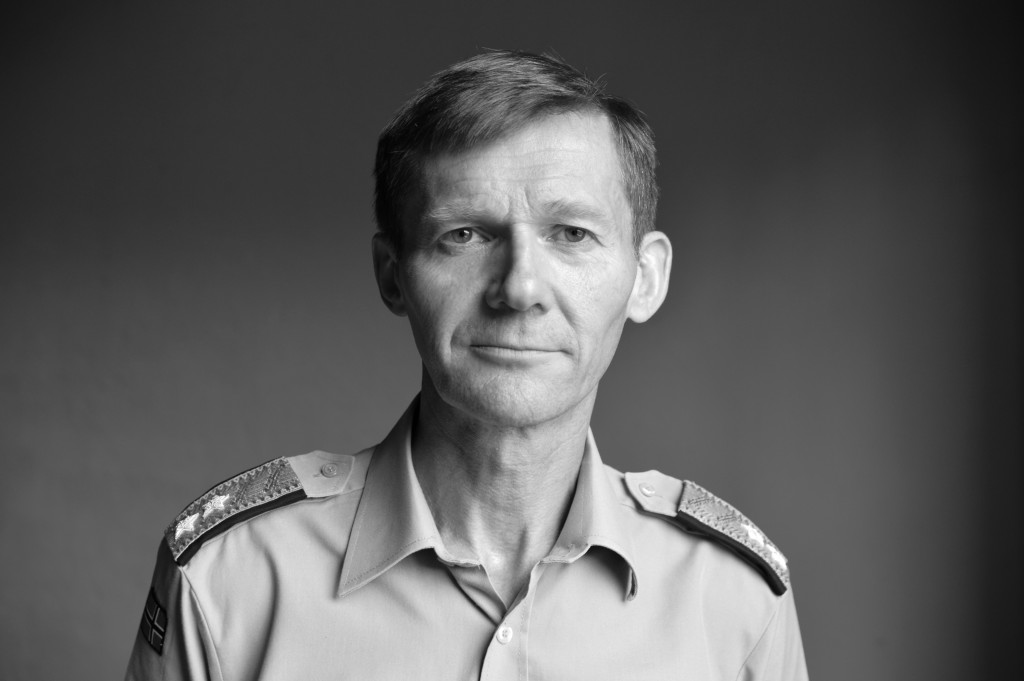(THIS ARTICLE IS MACHINE TRANSLATED by Google from Norwegian)
On 9 and 10 September, the Norwegian arms industry met at Akershus Fortress to conduct network building and find partners for new projects during the annual fair of the Defense and Security Industry Association (FSI). FSI organizes the vast majority of Norwegian companies in the arms industry, and arranged the fair at Akershus Fortress in collaboration with the ammunition manufacturer Nammo. More than fifty companies from the Norwegian arms industry – both the large companies such as Kongsberg, Nammo and Thales as well as a number of smaller companies – were to be found in the showrooms. Kongsberg Defense & Aerospace AS brought with them a model of the Joint Strike Missile, the missile that is being developed for the F-35 fighter jets, and a NASAMS High Mobility Launcher, the latest edition of the anti-aircraft firing system Kongsberg has developed in collaboration with American Raytheon. At the same time, changes have been made to the organization of the Armed Forces' procurement, on which the industry depends.


security industry association (FSI).
Shuts down scandal organization. Among the guests at the fair was Major General Dag Stølan, head of the newly established interim organization for new material retail, which has been in operation since mid-August. The purpose of the interim organization is to complete the transition period to a planned new material agency, which will be in place already from 1. January 2016. The new materiel agency, which has not yet received an official name, is scheduled to be directly under the Ministry of Defense, and the Defense Logistics Organization (FLO) is thus closed down. The reason for the decision to assign responsibility for the defense equipment to a separate civilian agency, explains Stølan as follows: “There is a need for a quality improvement in material investment and material management, and for stronger strategic management. It will be a quality boost because the organization is then directly under the Ministry. ”
According to a press release from Minister of Defense Ine Eriksen Søreide, this reorganization is the culmination of a process initiated by the Storting in 2004, which is based on a study by the Armed Forces' logistics organization carried out in 2008. The reorganization may nevertheless prove to be an opportune opportunity to procure – and the disposal regime in the defense start with blank sheets. The Armed Forces' logistics organization has been in bad weather over the past year, after Dagbladet revealed that ten former Norwegian naval vessels were sold to paramilitaries in Nigeria and other countries in West Africa – in violation of export rules for military equipment. The revelations led to changes in the export control regulations, an investigation by Økokrim and full dishwashing in the Ministry of Defense. A review of all disposal cases for military materiel has also been planned since 2002, a review that could potentially put the Armed Forces' logistics organization in an even brighter light.
The organization is now being replaced by a new material agency. But according to Major General Stølan, who is also former head of the investment team in FLO, most of the existing organizational structure will follow the new agency. All departments, with the exception of maintenance and supply, are transferred to the new agency more or less as they are. It is therefore mainly the management of the material organization that is moved from the Armed Forces to the Ministry of Defense. Earlier this year, the Minister of Defense announced a proposal to the Storting regarding the new material agency, but according to Stølan, the reorganization will instead become an information matter in connection with the presentation of the state budget.
Torbjørn Svensgård, CEO of the Defense and Security Industry Association (FSI), believes that the planned reorganization will have little practical significance for equipment procurement from the industry. "I do not think there will be any major change, and it will not change the procurement regulations. It really only means that there will be slightly different lines of control internally in the Armed Forces, "says Svensgård to Ny Tid.
More tenders, right? Another issue that is being talked about in the weapons industry these days is the notified parliamentary report on the relationship between the Norwegian defense and the industry. The Storting Report will update the strategy from the previous report, “The Armed Forces and Industry – Strategic Partners” that came in 2006 – 2007. The update should be in line with the EU directive on defense and security procurement, which was implemented in Norwegian law last year. So far, the Armed Forces' procurement has been largely exempt from the regulations for public procurement that follow from the EEA Agreement, as Article 123 has provided exceptions for defense and security matters. The Defense and Security Procurement Directive is intended to remedy this, and will lead to a more open European common market for the arms industry. However, it is currently uncertain whether the member states are ready to resolve the close relationship with their own industries. The directive also has uncertainty as to whether Norway may require repurchase agreements, whereby Norwegian industry receives smaller sub-contracts when entering into larger procurement agreements with foreign industry.
If the directive has its intended effect, it will probably have a lot to say for the Norwegian arms industry. From the FSI's side, however, there is an optimistic attitude to the framework the government will set for the relationship between the defense and industry. "Minister of Defense Ine Eriksen Søreide was here yesterday, and she was very clear that the main lines of the strategy from the previous report to the Storting are fixed," Torbjørn Svensgård told Ny Tid. "And then there are some areas where, in her opinion, there is room for improvement, and that includes cooperation between the defense and industry. The intention is to strengthen this, and then we will see what the result will be when the message is presented this autumn. "
Both the Right Party program and the Government Declaration indicate that the incumbent government wants to focus on the Norwegian weapons industry. The Sundvolden platform states: "The Government will help maintain and further develop an internationally competitive Norwegian defense industry."
Disputed exports. Such dedicated support from the government may well require the Norwegian weapons industry. The latest parliamentary report on the export of defense equipment from Norway, which came this spring, showed that the export value of Norwegian weapons has fallen from 2012 to 2013. This is a trend that has largely persisted since 2009, and reflects that the defense budgets in the western countries have shrunk as a result of the financial crisis and the subsequent economic crisis. However, exports constitute the majority of the turnover for the Norwegian arms industry, and exports as a proportion of total turnover have increased sharply in the last decade, according to FSI.
“The United States is definitely the largest and most important market for us. Poland is also a large market and that is where we have the largest deliveries, ”explains Svensgård. "We work a lot with the other partner countries within the F35 program, and there is a lot of work being done on Korea and Japan."
The aforementioned countries are perhaps the largest buyers of Norwegian defense equipment, but the industry – and the Ministry of Foreign Affairs, which issues export licenses – are constantly criticizing exports to authoritarian regimes. The year 2013, which was the subject of the last parliamentary report, was no exception. Both Saudi Arabia, Algeria, Egypt, the United Arab Emirates, Oman, Qatar and Sudan were on the list of countries that were customers of the Norwegian arms industry in 2013.
Aarseth is a freelance writer and regular contributor to Ny Tid. tori.aarseth@gmail.com


